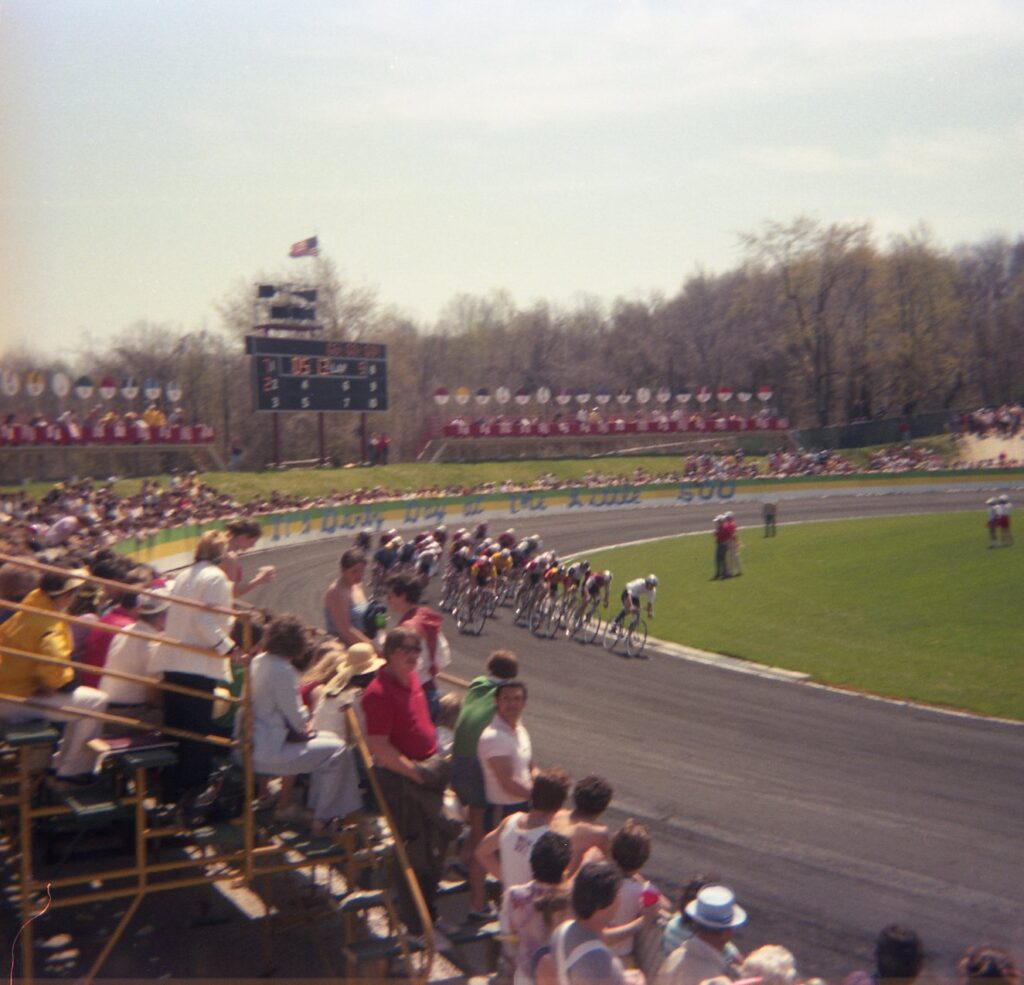
The Little 500 bike races at Indiana University have been a popular campus tradition since the mid-20th Century. But it took a low budget movie that captured the public’s attention to bring the race to a wider audience. For a few years in the early 1980s, the Little 500 was a national sensation, featured on network television and the front page of the New York Times.
Early Broadcasts
The Little 500 bike race was started in 1951 by Howdy Wilcox of the IU Foundation as a fundraising event partially based on the Indianapolis 500. While women weren’t technically barred from the race, they were relegated to an indoor trike race, Mini 500, until the women’s Little 500 race was launched in 1988.
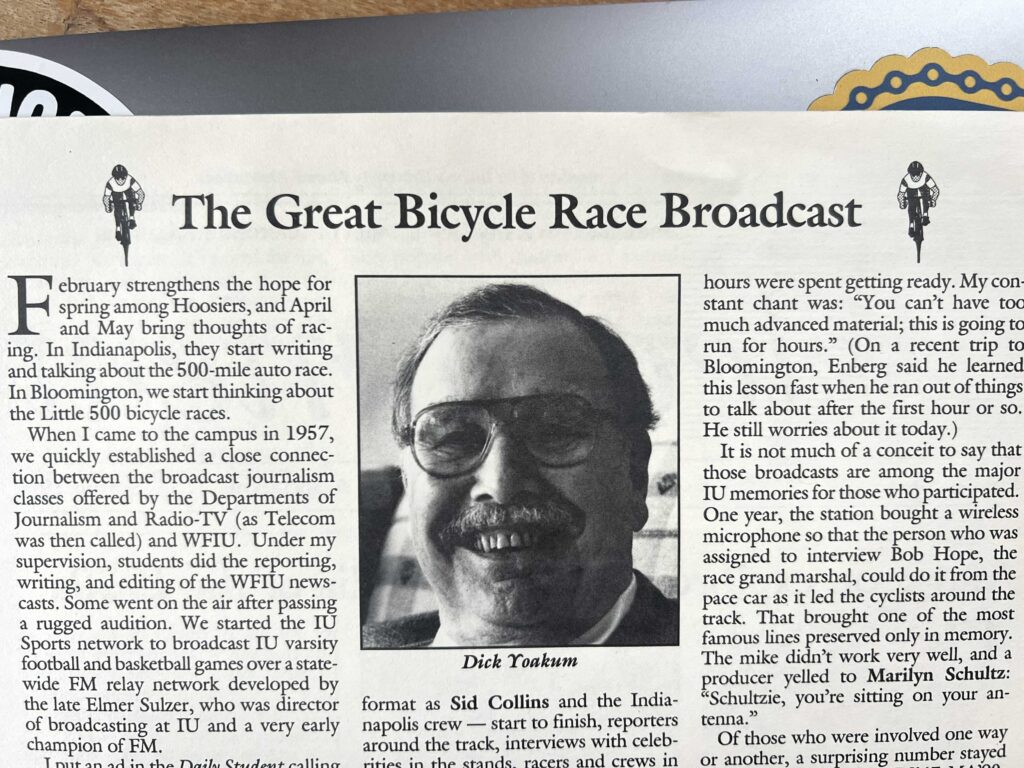
During the 1960s and 1970s, IU broadcast professor Richard Yoakam would take his students out to the 10th Street Stadium where they would attempt to emulate the Indianapolis 500 radio broadcasts for the campus bike race. Some of the students involved in the Little 500 coverage, as well as the student-led IU Sports Network, over the years included Dick Enberg, Phil Jones, Marilyn Schultz, Ken Beckley, Ed Spray, and Bob Jenkins.
WIUS/WIUX Student Radio
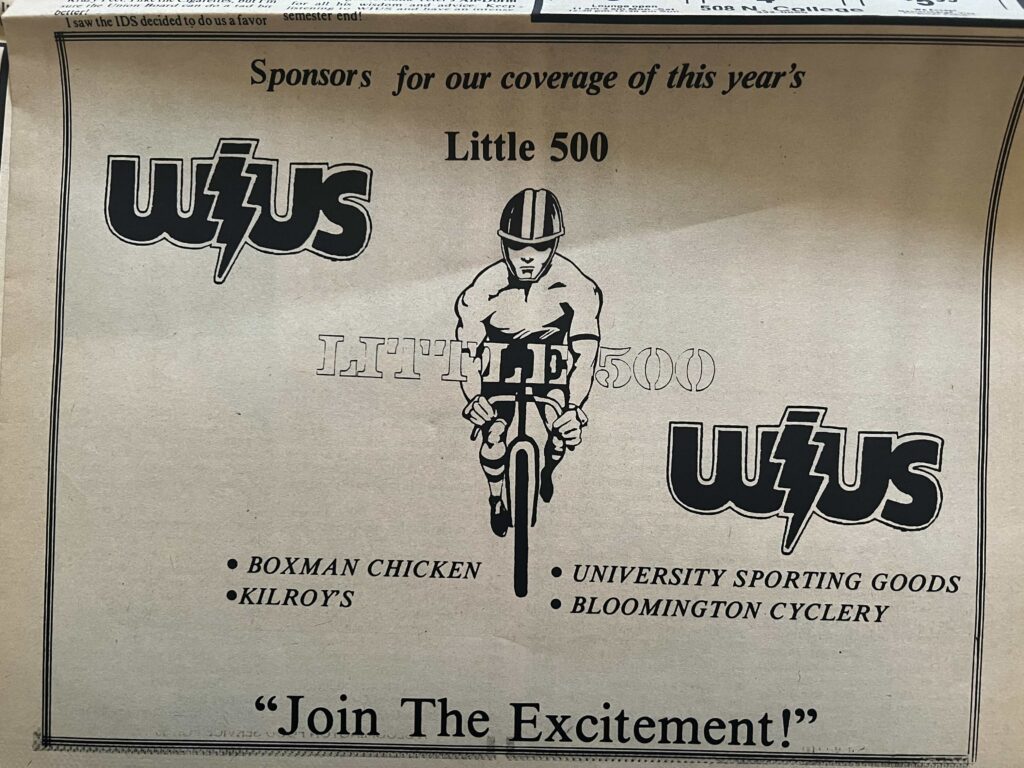
IU’s campus-wide radio station WIUS began in the mid-1960s as a carrier current and cable FM station. The WIUS sports department provided live coverage of the Little 500 race throughout the rest of the century. In 2005, the station acquired an FM radio license and changed its call letters to WIUX. The station continues to broadcast the Little 500 races each year.
Breaking Away
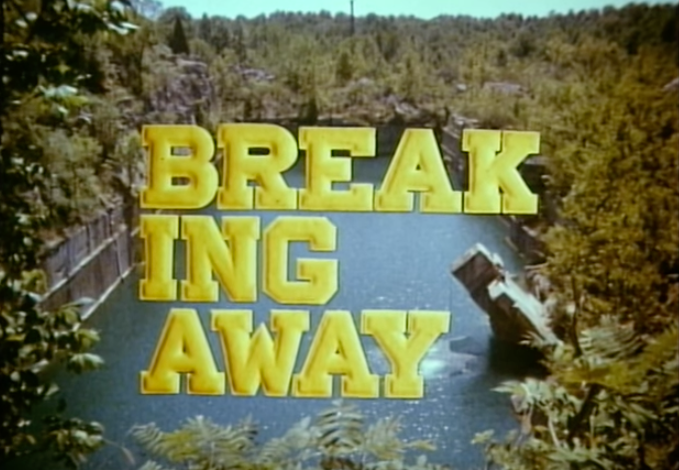
In the summer of 1978, Director Peter Yates began filming a fictional coming-of-age movie in Bloomington, centered around the Little 500. Screenwriter Steve Tesich based his story of a Bloomington townie obsessed with Italian bike racing on an actual Little 500 rider, Dave Blase, from the 1960s.
The movie starred Dennis Christopher, Dennis Quaid, Daniel Stern, and Jackie Earle Haley. The film crew also featured actual Little 500 riders, including 3-time Delta Chi winner Bill Brissman. During the filming of the finish of the race at the 10th Street Stadium, Director Yates had to remind Brissman that his character had to lose the sprint to the finish to the rider representing the movie’s main character. Brissman had to tamp down his competitive spirit and they were able to shoot the race finish in one take.
Even though Breaking Away was a low-budget movie, $2.3 million, the story resonated with people around the country. The movie was nominated for four 1979 Academy Awards, including Best Picture. The movie made more than $20 million dollars at the box office. Steve Tesich won an Academy Award for his screenplay. Breaking Away is still considered one of the greatest sports movie ever released.
To cash in on the success of Breaking Away, NBC made the aggressive move of paying $5 million to broadcast the movie in prime time in May 1980. During this era, most major movies wouldn’t appear on television for a few years and usually appeared first on pay cable sites such as Home Box Office (HBO).
Little 500 National Attention
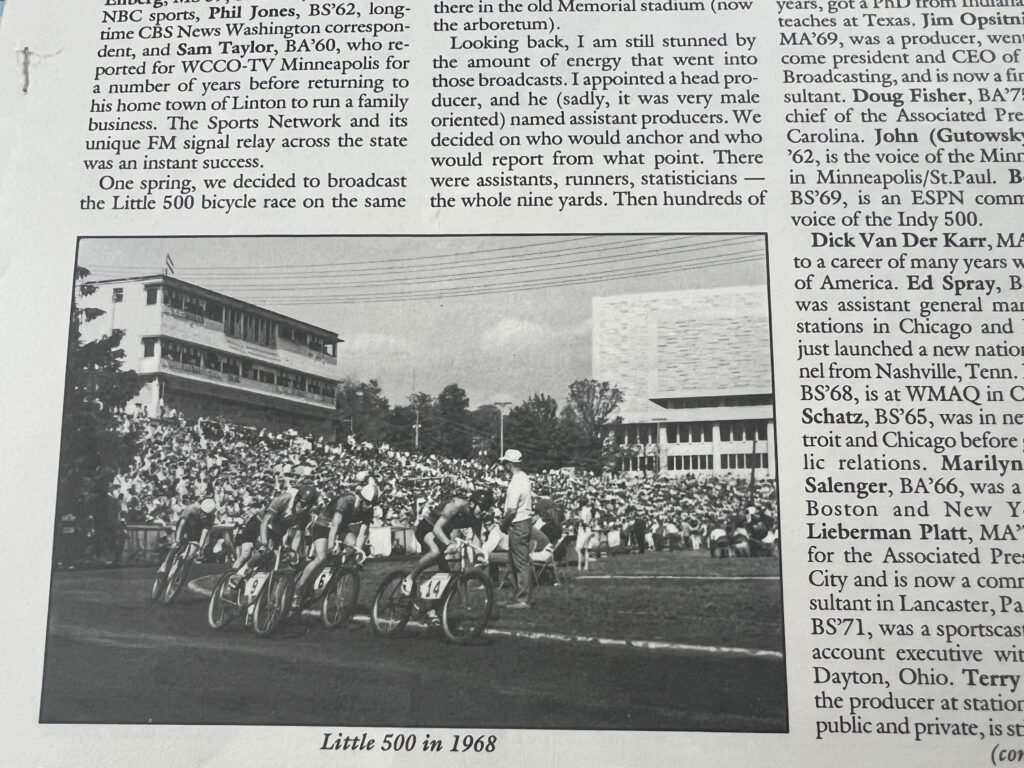
The success of Breaking Away led to national recognition for the Little 500 and a major upgrade to the race. The Little 500 was held in the 10th Street Stadium for the final time in 1980.
Donations to the IU Foundation after Breaking Away brought in enough money to build a new Little 500/Soccer stadium on Fee Lane, near the other sports facilities. The facility would be renamed Bill Armstrong Stadium in 1983.
1981 Race
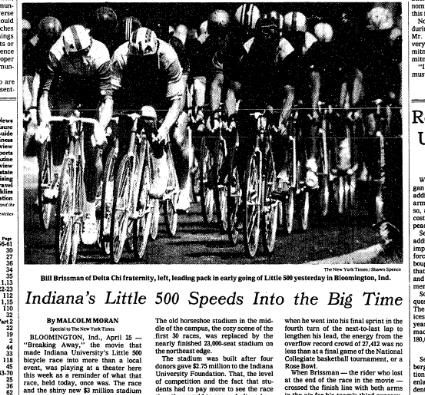
The Breaking Away impact on the Little 500 was clear by the 1981 race. The race had moved to the new $3 million stadium that could seat 23,000. Not everyone got a seat. The overflow crowd was listed at 27,412. The IU Student Foundation issued 140 press credentials to 50 different news organizations. There was talk that ABC wanted to broadcast the race, but that didn’t happen because of legal issues on exclusivity. A cable network launched in 1979, Entertainment & Sports Programming Network (ESPN), ran highlights of the race.
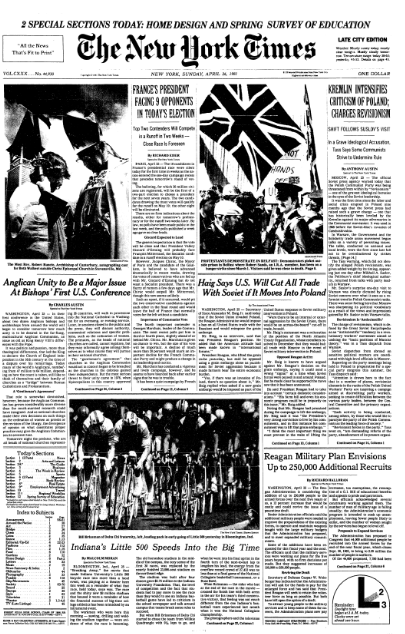
The race received front page coverage by the New York Times. Reporter Malcolm Moran wrote the energy at the stadium “was no less than at a final game for the National Collegiate basketball tournament, or a Rose Bowl.”
In the race, Delta Chi continued its dominance. Bill Brissman may have had to slow his pace in Breaking Away, but not in the real event. He won his third Little 500 race. Delta Chi won seven of the nine Little 500s from 1973 to 1981.
Times reporter Moran described the finish as “that feeling was not much different from the one Indiana’s basketball team experienced last month when it won the National Collegiate championship.” Bobby Knight’s 1981 IU basketball team had defeated North Carolina for the NCAA championship in the previous month.
But not everyone was excited about all the money and attention. The Sports Editor for the Indiana Daily Student, the IU student newspaper, Janet Graham was quoted in the New York Times as saying the Little 500 doesn’t seem like a good time anymore: “Are we running this race to satisfy the moneymakers – Foundation – or are we running it for the enjoyment of the students?”
More Attention in 1982
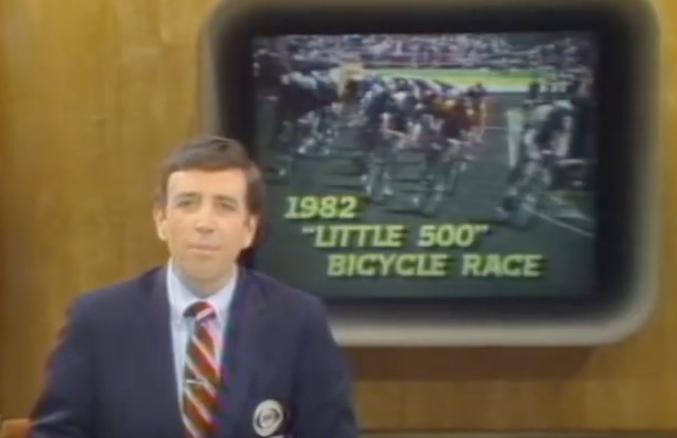
The 1982 Little 500 race finally attracted network television attention. CBS Sports Saturday broadcast the race with Ken Squier calling the race and Breaking Away inspiration Dave Blaze providing color commentary.
The Little 500 didn’t disappoint the national audience by offering up one of the most exciting finishes in history. In the final lap, Delta Chi’s Chris Gutowsky was in the lead looking for the team’s 8th win in ten years.
In the final turn, Chris Mahaffey of Phi Delta Theta came out of the pack and nudged passed Gutowsky at the finish line.

Here are highlights of the CBS coverage of the 1982 Little 500.
1983 Little 500

The 1983 edition of the race started with a major surprise. The Delta Chi team, which had lost in a photo finish the previous year and had won seven of nine previous races, did not even qualify among the 33 teams.
The 1982 winner, Jim Mahaffey of Phi Delta Theta, had ear surgery prior to the race and needed to be cleared by his doctor to ride. He arrived at the stadium with a head bandage and announced he would be riding.
Phi Delta Theta stayed close throughout the race, but still trailed toward the end of the 200 laps. The plan was to get the bike to Mahaffey for the final laps to see if he could pull off another come from behind victory.
Unfortunately, Phi Delta Theta botched the bike exchange to Mahaffey and he lost so much time that the defending champions were never able to catch the winning team, Acacia and rider Jeff Hilligoss.
Here’s the race recap and dramatic finish from WTHI-TV in Terre Haute that day. Story at 18:45 of video below.
Clips in this video
In 1983, Broadcast Communications Inc. produced coverage of the Little 500, using WTTV-TV production facilities. Don Fischer and Max Skirvin provided the play-by-play and commentary. Here are highlights of that coverage.
One final broadcast note. The 1983 winning Acacia team was sponsored by WTTS/WGTC radio stations, owned by Bloomington’s Sarkes Tarzian Inc.
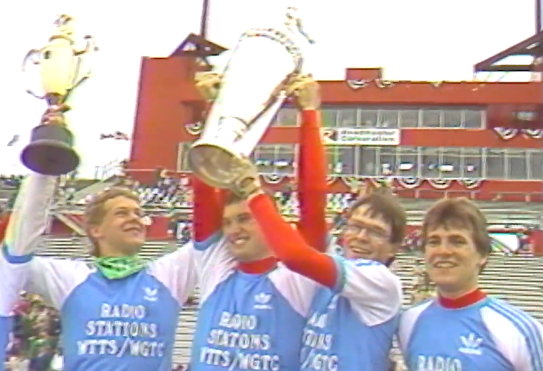
Postscript
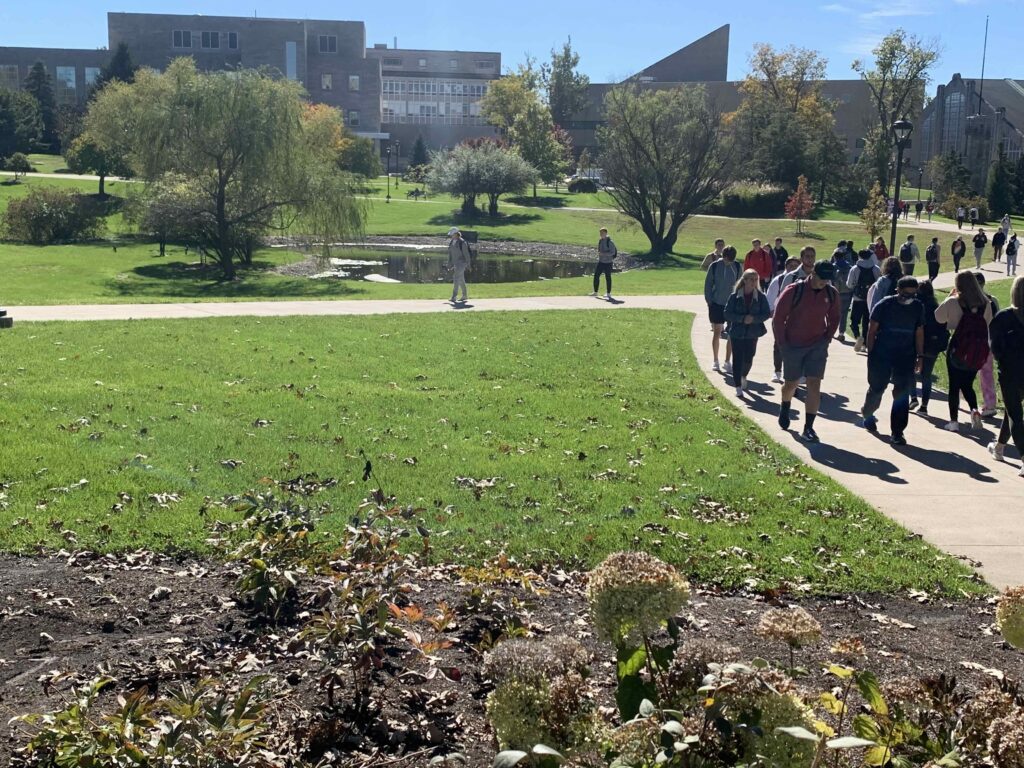
The 10th Street Stadium was torn down in 1982. Different groups on campus were vying for use of that prime space on campus. Instead, IU chose to turn it into a green space, known as the Arboretum.
As a tribute to the former stadium, some parts of the structure were saved and integrated into the Arboretum design.
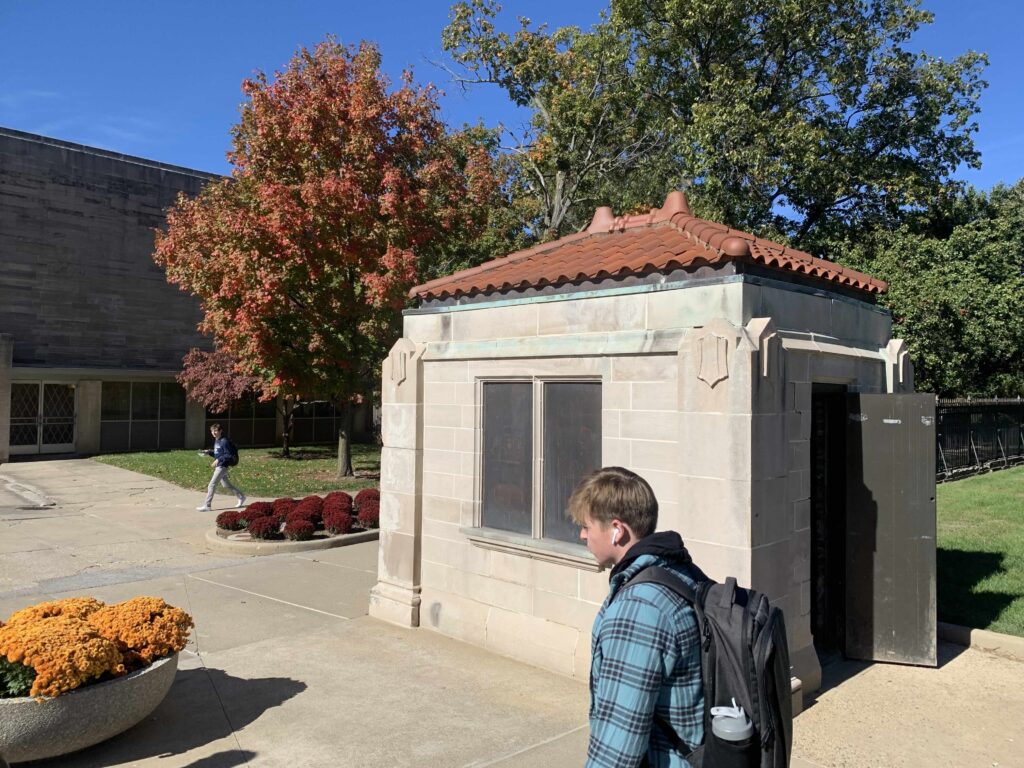
by Mike Conway, April 2024
Sources include:
-Dick Yoakam, “The Great Bicycle Race Broadcast,” Telecomment, Vol 5, #1, Spring 1995, p2-3
-Malcolm Moran, "Indiana's Little 500 Speeds into the Big Time, April 26, 1981, Section 1, Page 1
-Jordan Siden, "The Mini 500: The Gendered History of a Forgotten Tradition," Voices from the IU Bicentennial, April 17, 2017.